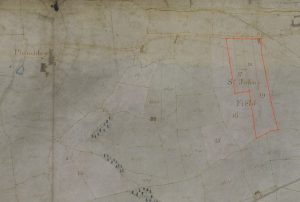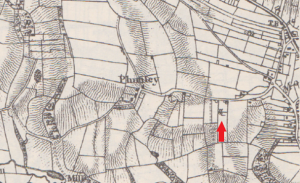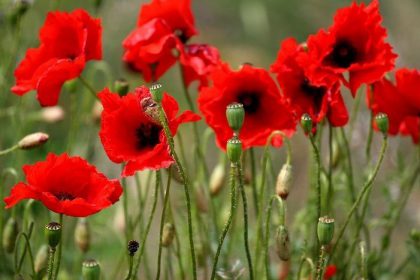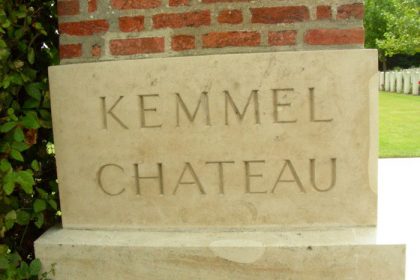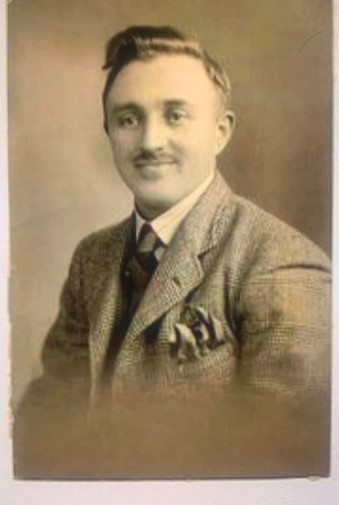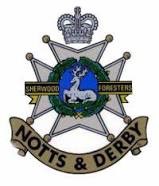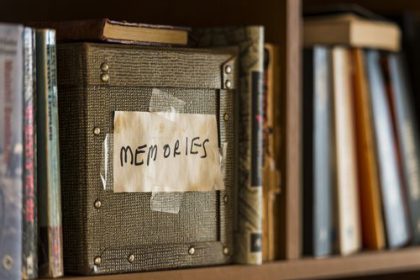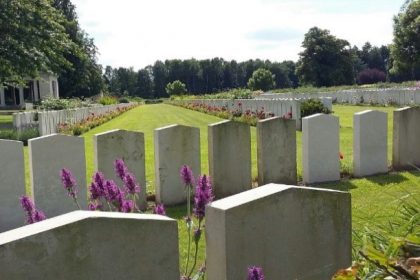Mosborough’s elevated location, at around 100m. above mean sea level means that the village was well suited for the establishment of windmills. At the Domesday survey, there was no mill in Mosborough, so local farmers were obliged to take their corn to the Eckington Park mill for grinding[1]. Although the village is more widely known for its sickle making and mining industries, it was principally an agricultural community at the turn of the nineteenth century.
Burdett’s map of Derbyshire dated 1767 shows no windmill at Mosborough, and John Farey in 1808[2] listed no windmill there. However, Sanderson’s map of 1835 (surveyed between 1831 and 1834, see Figure 2) does identify a windmill on land to the south of Plumley Lane[3]. Other nearby windmill sites include Spinkhill and Beighton (Waterthorpe)[4].
There are also records of a second windmill at Beighton Hill, dating back to the mid-1800s. Both these windmills have now disappeared.
Plumley Windmill
The earliest record of the Plumley Windmill appears in the Court Rolls of the Manor of Eckington, where at a meeting of the Small Court Baron held on 4th June 1802:
“Thomas Unwin of Mosborough, yeoman, John Unwin of Plumley Lane, millwright and John’s wife Rebecca, had a messuage on Plumley Lane together with a newly erected windmill for the grinding of corn into flour”[5].
The Unwins are an old Eckington family and were already holding land in Plumley in 1691, probably conveyed to them by Robert Staniforth of Ford in 1661, following William Unwin’s marriage to Alice Staniforth in 1658.
In 1804, Thomas and John were awarded land in St. John Field at Plumley under the provisions of the Eckington Enclosure Act. An extract from the rather faint Enclosure plan is attached in Figure 1, showing edged red their allotment off Plumley Lane, including the messuage or dwelling house at the north western corner.
[1] A new water corn mill was erected on a tributary of the River Moss called the Norbeck around 1583 by James Lynacre and James Stannyforth to serve the Plumley and Westwells estate, but this proved to be short-lived owing to opposition by the Crown (Derbyshire Archaeological Journal, Vol. 38, p. 189).
[2] Farey, J., General View of the Agriculture and Minerals of Derbyshire, Vol. II, 1813, p. 492.
[3] Sanderson, G., Sanderson’s Map, Twenty Miles Round Mansfield, 1835.
[4] Gifford, A., Derbyshire Windmills, Past and Present, 2003, p. 70.
[5] Garratt, H. J. H., Eckington, The Court Rolls, Vol. V, p. 249. Thomas and John were probably a father and son partnership.
Figure 1. Extract from the Eckington Enclosure Plan
It was here that the Unwins erected their windmill, probably shortly after the Enclosure Plan was drawn in 1804. Its location is illustrated in George Sanderson’s map of Twenty Miles around Mansfield, published in 1835 (Figure 2).
Figure 2. Sanderson’s map of 1835. Location of the Plumley Windmill
In 1856, the Eckington Poor Rate assessment enumerated a field No. 1034 named “Windmill Croft”, noting the presence of a smock mill. According to Gifford, the mill’s description as a smock mill relates to a brick or stone tower mill[1]. Also included in the assessment was a kiln owned by Joseph Oates. Oates was a woodman from West Street, Mosborough, so it is assumed that the kiln might have been used to dry timber from Plumley Wood.
Thomas Unwin (1732-1807), the father of the Plumley windmill family, was baptised at St. Peter and St. Paul parish church, Eckington, on 6th September 1732, the son of William Unwin (d. 1777) of Ford, yeoman, and his wife, Elizabeth. Thomas married, around 1760, another Elizabeth, about whom little is known. The couple had six children:
-
William (1761-1839) was baptised at St. Peter and St. Paul parish church, Eckington, on 6th February 1761. In 1771, his grandfather, William Unwin of Ford, yeoman, left him a messuage and lands in Mosborough, which he inherited on his grandfather’s death in 1777. Three years later, he surrendered a house and parcel of land in Mosborough to his brother, David Unwin of Mosborough, hatter[2]. William died at Mosborough, probably unmarried, at the age of 79, and was buried at Eckington on 20th August 1839.
-
John (1763-1845) was baptised at St. Peter and St. Paul parish church, Eckington, on 16th October 1763. He married Rebecca (c. 1770-1858) around 1792, and it was probably shortly afterwards that he and Rebecca joined with his father in the Plumley windmill enterprise. The will of his grandfather, William Unwin of Ford, specified that he was to inherit a house, barn and land at Plumley on the death of Thomas, his father. John died at Plumley, aged 82, and was buried at Eckington on 3rd January 1843. Three children.
-
Thomas (1766-1771) was baptised at St. Peter and St. Paul parish church, Eckington, on 20th October 1766, and died at the age of 5 years. He was buried at Eckington on 13th March 1771.
-
David (1769-1822) was baptised at St. Peter and St. Paul parish church, Eckington, on 25th March 1769. He was a hatter and married Sarah Swift (1786-1856) of Staveley at Eckington on 4th December 1809. They lived at Holbrook. David died in 1822, aged 53, and was buried at Eckington on 22nd May 1882. Sarah died at Holbrook, aged 69, and was buried at Eckington on 24th June 1856. One child.
-
George (1771-1848) was baptised at St. Peter and St. Paul parish church, Eckington, on 18th August 1771. He was also a hatter and married Sarah (b. c.1781) of Marsh Lane around 1810. The couple lived for a while at Holbeck Bar[3]. George died at Holbrook, aged 70, and was buried at Eckington on 7th December 1848. After George’s death, Sarah opened a grocery shop at Holbrook, living there with her son, Edward, until her death, probably in 1856. Six children.
-
Ezra (1779-1858) was baptised with the name Esau at St. Peter and St. Paul parish church, Eckington, on 24th June 1779. Like his brothers, David and George, he was a hatter and married Elizabeth Platts (b. 1771) of Dronfield at Eckington on 7th October 1799. After Ezra’s death, probably in 1858, Elizabeth lived with their son Mark at Neepsend Lane in Sheffield. Five children.
Thomas Unwin, the father, was admitted to the Plumley estate, which had descended to him on the death of William Unwin, his father, in September 1782[4]. On the same day, Thomas and his wife Elizabeth and his eldest son and heir, William, surrendered the property to Samuel Staniforth, linen draper of Sheffield, in return for a loan of £100[5].
Thomas died in 1807. He was succeeded at the Plumley windmill by his son, John, who appears in local directories as a corn miller at Mosborough in 1833[6] and 1842[7]. John died in 1845 and was succeeded at the windmill by William Whiteley (b. 1817)[8]. William was brother-in-law to Thomas Cooper (c.1801-1864) of Knowle Hill Mill, corn miller, who had married William’s sister, Hannah Whiteley (1806-1886), and was recorded at Knowle Hill Mill in the Census of 1841.
William was born at Soyland, near Halifax, and baptised at the parish church of St. Bartholomew, Ripponden, on 31st August 1817, the youngest son of John Whiteley of Soyland, weaver, deceased, and his wife Elizabeth (‘Betty’) (nee Clayton, 1779-1848),
William married Charlotte, the daughter of Robert Radford (1781-1860) of Netherthorpe, Killamarsh, farmer, and his wife, Elizabeth (nee Wilcock, 1791-1854) at Sheffield on 25th April 1843. The couple lived at Mosborough Green and had one son:
-
George (1848-1918) was baptised at St. Peter and St. Paul parish church on 30th April 1848. He was a grocer’s assistant living in Spital Street, Sheffield, when he married Mary Lee (1849-1886) at St. Philip’s church in Sheffield.
For a time around 1843, William was in a partnership with his older brother, James, both corn millers at Knowle Hill Mill, Mosborough. William continued there after the partnership was dissolved[9] until he moved to Plumley windmill around 1845. He is recorded there in trade directories in 1849[10] and 1852[11], and then in 1856 as a “wheel owner”[12]. There is no further mention of the William Whiteley or Plumley windmill after 1852 when it is presumed the windmill fell into disuse.
[1] Gifford, A., Derbyshire Windmills, Past and Present, 2003, p. 70.
[2] Garratt, H.J.H., Eckington, The Court Rolls, Vol. V, p. 236.
[3] Holbeck was an early name for Holbrook.
[4] Garratt, H.J.H., Eckington, The Court Rolls, Vol. V, p.208.
[5] Ibid. This was probably Samuel Staniforth (1725-1811), a mercer and linen draper, of Grimesthorpe, Sheffield. His shop was located on Castle Street and he was a Sheffield Town Trustee. Died unmarried and was buried as Sheffield Parish Church. Acknowledgement to Nathan Staniforth of www.staniforthfamily.com for this information.
[6] White’s History and Directory of the Borough of Sheffield, 1833.
[7] Pigot’s National and Commercial Directory, 1842.
[8] Bagshawe’s History, Gazetteer and Directory of Derbyshire, 1846.
[9] Notice of dissolution of partnership, James Whiteley and William Whiteley, corn millers. Derbyshire Courier, 19th August 1843.
[10] White’s General Directory of Sheffield, 1849.
[11] White’s Gazetteer and General Directory of Sheffield, 1852.
[12] White’s General Directory of Sheffield and Rotherham, 1856.

